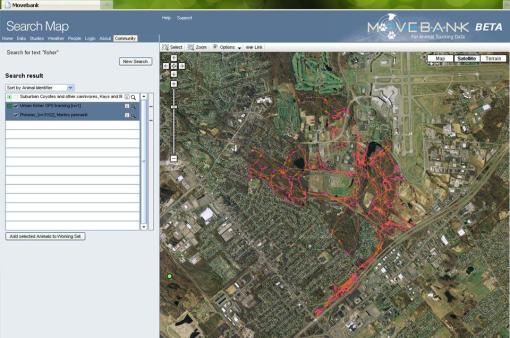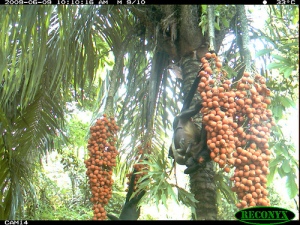It’s the classic horror scene – a defenseless young victim sleeps as a bloodthirsty predator stalks just outside the bedroom. This plays out nightly in the rainforest as ocelots stalk past agoutis sleeping in hollow logs or tree holes. Our camera traps on BCI occasionally record the end result of this drama, for example, this ocelot toying with a baby agouti in the middle of the night.
From previous work we knew that ocelots eat a lot of agoutis, often catching them at night near their burrows. However, we didn’t know if this was just random encounters, or if the ocelots were seeking out the sleeping rodents. This question is more than simple curiosity given the importance that refuges are thought to play in how animals move around when they aren’t sleeping too.
The ‘Central Place Forager’ hypothesis suggests that prey should stick close to their refuges so they can quickly run to safety if they detect a predator sneaking up on them. However, if predators cue in on sleeping sites, prey should avoid these areas when they aren’t actually sleeping. Two opposite predictions – so which is it?
To answer this question Willem-Jan Emsens led an effort to radio-track agoutis to find where they slept, then ran camera traps to monitor the agoutis as they come and go. These cameras also recorded ocelots. Not only did the ocelots walk by, but our videos show them actively trying to get into the agouti hide-outs.
Our camera traps recorded ocelots at agouti refuges more than 2x as often as at non-refuge sites, and showed that they hung out at agouti holes 5x longer than other sites. Ocelots apparently could tell if the refuge was occupied or not, as they spent about a minute trying to get at agoutis in holes, but took just a few seconds to figure out that no one was home, and move on. No agoutis were harmed by ocelots while our cameras were running, but they must have been well terrified as the cats tried to claw their way in.
So the answer is YES – ocelots do target agouti refuges, but agoutis seem safe as long as they stay tucked away out of reach. Their bed is safe, but their bedroom (the area around the refuge) is risky. I just hope they don’t have to get up in the middle of the night to go to the bathroom!
Based on our new paper “Prey refuges as predator hotspots: ocelot (Leopardus pardalis) attraction to agouti (Dasyprocta punctata) dens” in Acta Theriologica 2013.
























